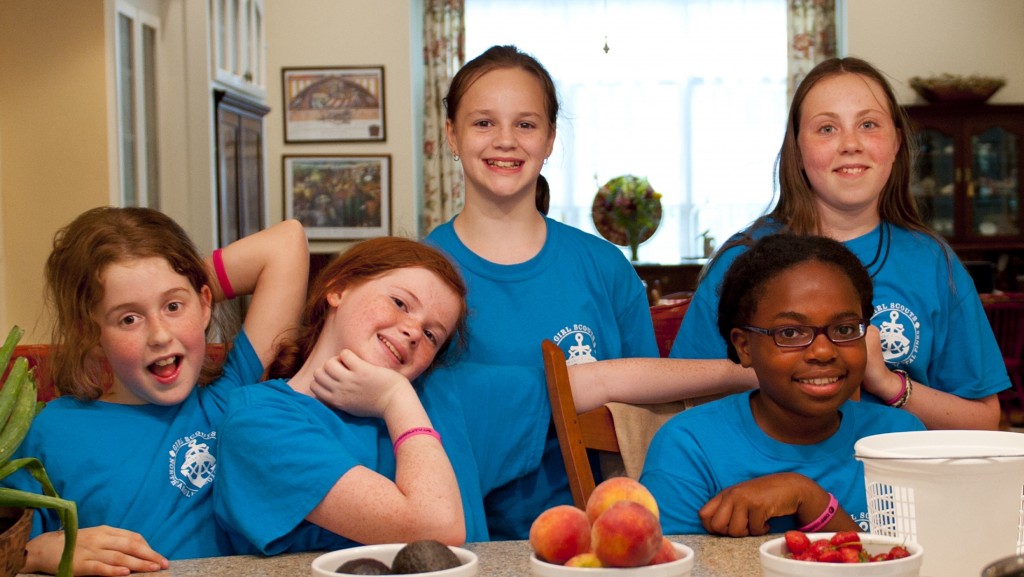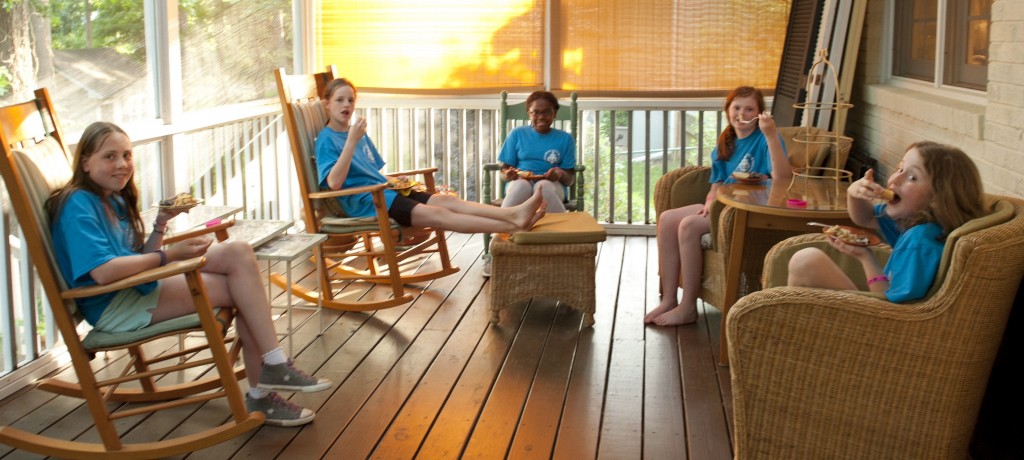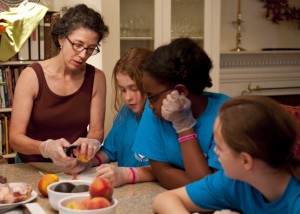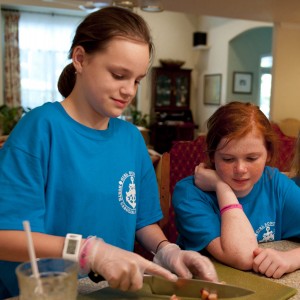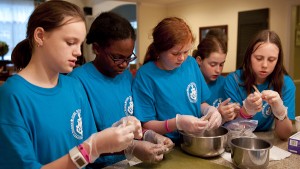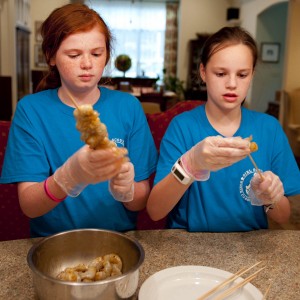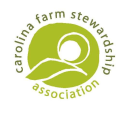An unusual request to teach a girl scout troop came up a few weeks back. They were working on a set of badges that required the use of local food and adapting old recipes from another country. They choose to work with traditional recipes from Spain in the 1900’s as their starting point. Morphing these into something they might eat today seemed a little daunting, but it turned out to be a lot of fun and a good teaching assignment. The girls shopped the farmers’ market before class with their troop leaders and found all of the local ingredients we needed for the meal, just as they would have a hundred years ago. We previously selected a set of recipes that seemed seasonal enough to replicate in some way depending on what they found during their shopping trip so there was a little flexibility built into the lesson. The recipes included a couple of ideas using rice, black beans, and shrimp. For dessert we simply picked some common elements in recipes that included cakes and fresh boards of cheese and nuts. That made my job, of creating updated recipes, much easier. I felt like this would be a good challenge for IBM’s Chef Watson application because the latest version has the ability to specify up to four ingredients along with more detail about the type of dish and some regional choices for cultural changes. With these options, it’s possible to let the computer program come up with variations on a theme that are based on culture or season with some experience.
Spain is known for small plates and lots of conversation during a meal. With a three-hour class window, it was pretty easy to embrace this cultural exchange as a part of the lesson. Dinner followed a leisurely pace as we made adjustments to the recipes for each course. All in all, a pretty enjoyable way to conduct a cooking lesson.
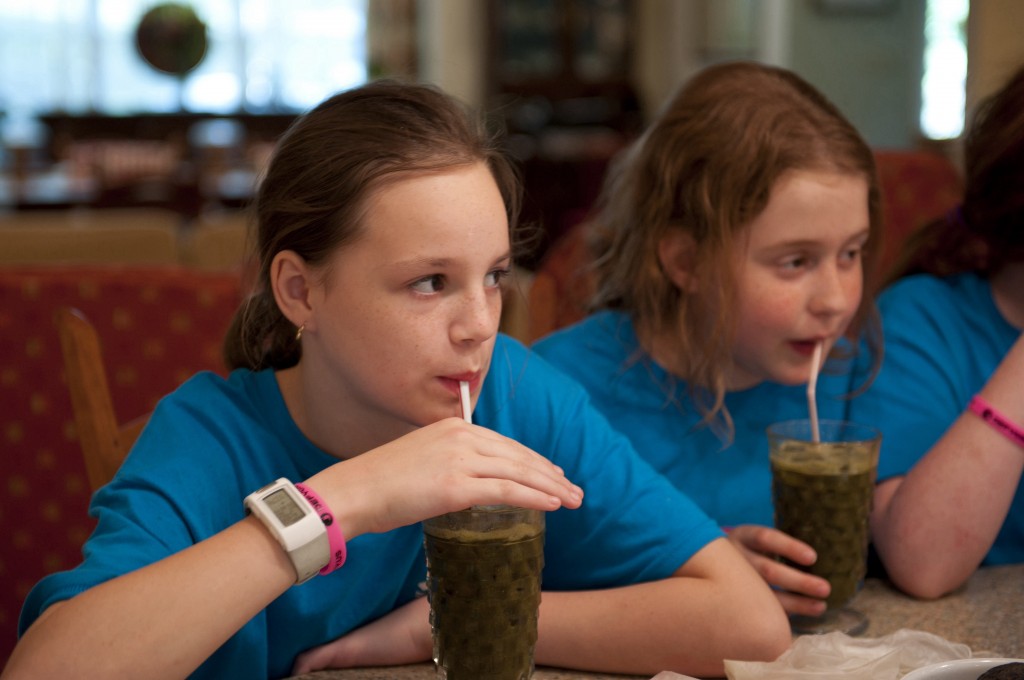
Green Smoothies with chard, turnip greens, strawberries, peaches, lemon verbena, pineapple sage, dried apples, coconut water. Image copyright CaseyBoonePhotography.com
Now we all think Spanish dishes are synonymous with tomatoes. But, there are many early dishes where tomatoes were never used simply because they were not grown. Many Spanish meals rely on seafood because so much of the land is boarded by water. Seasonal greens play a predominant role as well. As I looked through history websites and reviewed recipes, one that looked promising was a chilled green gazpacho.
I’ve probably mentioned before that I think of soup in much the same way that I think about smoothies. The sum of the parts, balanced properly, can be morphed from soup to smoothie to frozen pop, depending on the weather and what’s available. So when the girls brought in a mountain of baby chard from Wild Onion Farms along with late strawberries and early peaches, I pulled up some recipes I had stored in Chef Watson’s recipe box and with the girls, compared them to the traditional soup recipes that I found on a Spanish history website. With just a bit of tweaking, it was pretty easy to move the traditional savory chilled soup to a refreshing chilled Rainbow Chard Strawberry Peach Smoothie.
The girls cleaned the greens, learned how to skin a peach, and chopped the strawberries. After reviewing the recipes one last time, we proceeded down the rabbit hole of measuring. Which means, we didn’t. Bad habit that I thank my Grandmother for daily. Except in this case it worked fine and taught the girls how to taste and adjust a recipe on the fly. In these situations, it’s important to think about the ratios. How much liquid to frozen fruit or fresh fruit before you bind the blender and it won’t mix? And how many greens before a drink becomes ugly or doesn’t taste good? We looked closely at the examples in front of us and proceeded. I warned the girls that it might not be pretty.
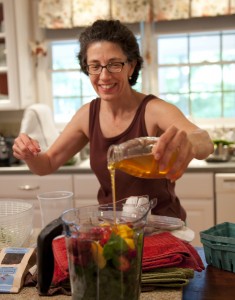
A good ‘pour’ of honey from The Carolina Bee Company. Image by CaseyBoonePhotography.com. All rights reserved.
Mixing chard with dried apples, strawberries, peaches, honey and coconut water in the VitaMix made the ‘cooking’ fast and showed the girls how to turn a ‘raw’ meal into a nutritious and quenching drink. According to Chef Watson, some other alternatives might include figs, apple cider, and pears in late summer. Maple syrup or sorghum would be a nice alternative in the fall or winter months. As we started to blend the fruit and greens, it became pretty clear that the beautiful red strawberries and ripe yellow peaches were not going to hold their color against the greens. Let’s just say that it was not a pretty smoothie. This is the point where you wish you had cups with lids. We poured it over ice in vintage glasses, added straws, and surprisingly, the girls gulped it down, despite the color, and raved about it all evening. Who knew? Chef Watson, apparently.
As we began preparing the main dishes, all of the girls had an opportunity to help chop, mix and cook the dishes they were most interested in, including cleaning and threading the shrimp on skewers. This process proved to be most entertaining for all of us and the girls managed to keep all of the shells and legs separated from the part we planned to cook.
Moving on to the next course I had a surprise in store for the girls. Never having made either ink pasta or ink rice, I picked up some squid ink to add to our locally grown rice. I tried hard to find a local replacement for this ingredient that would add the flavor that squid ink has, but could not find a suitable substitute, so I did break down and buy the dry squid ink from the store. The recipe that Chef Watson pulled together suggested using zucchini blossoms along with feta, garlic, green onion, and thyme. We eliminated the blossoms. Feta from Prodigal Farm, roasted garlic from Waterdog Farm and fresh thyme from the garden created the most wonderful rice dish that paired well with the shrimp and black beans.
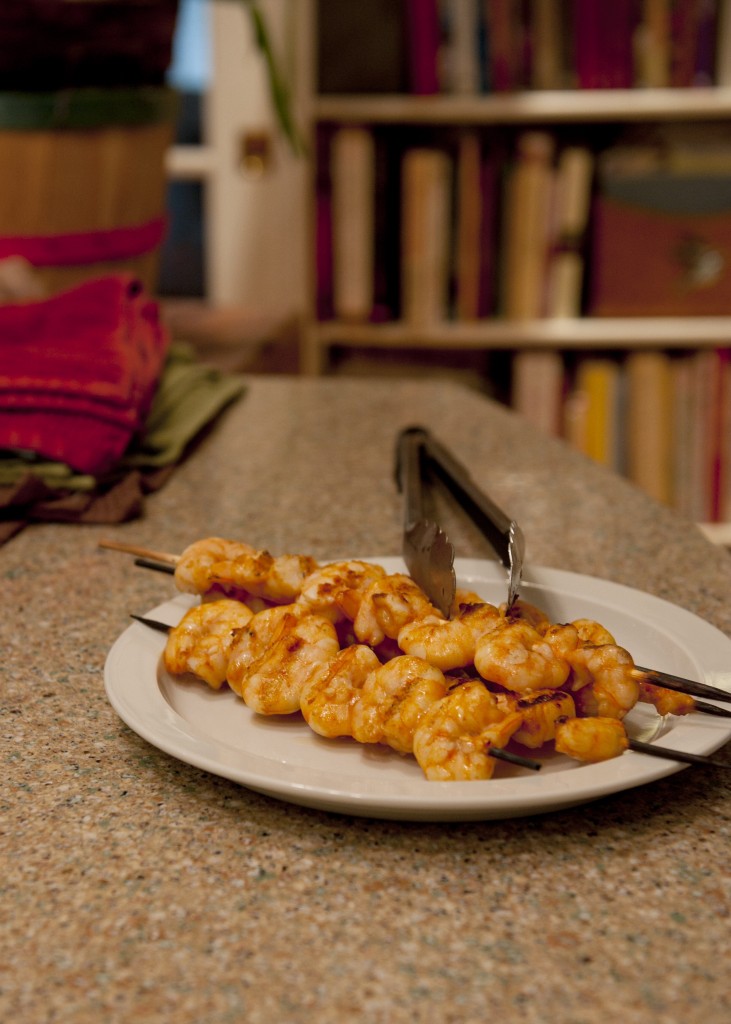
Grilled shrimp from Locals Seafood with a bit of salt, pepper, sweet paprika. Image by CaseyBoonePhotography.com. All rights reserved
Grilling is common in Spain. The girls were given the option of outdoor grilling or indoor sautéing with the shrimp.Most of the girls had not worked with raw shrimp so they learned how to pull the legs off and then the shell. Fortunately our friends at Locals Seafood had already taken care of the heads. The girls wanted to grill and they wanted something less spicy so we modified the recipe to use sweet paprika instead of hot.
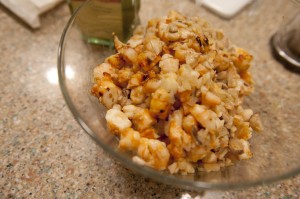
Sauteed mushrooms, onions and bacon mixed with the grilled shrimp along with some fresh herbs create a light entree dish that pairs well with the black beans and black rice. Image by CaseyBoonePhotography.com. All rights reserved
To go with the grilled shrimp we used a recipe from Chef Watson for Shrimp Risotto. The ingredients included mushrooms, onions, bacon, basil, stock and cream. The original recipe also called for butternut squash, but the girls elected to leave it out, because we had used sweet paprika instead of hot. One of the unique things about using this application is that it pushes you to be more creative and it also allows you to find alternatives easily. In our version of the recipe, the lack of hot paprika didn’t require a sweet to balance to flavor.
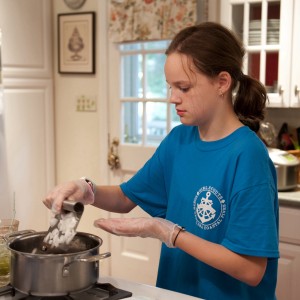
Adding local onions and pasture raised bacon to the black beans. Image by CaseyBoonePhotography.com. All rights reserved
With the rice cooking away, I showed the girls how to use the other ingredients from the farmers market to flavor the black beans. Our black beans were locally grown on Cohen Farm by one of their staff. They are hand-picked, cleaned and dried in small batches. They are so fresh that you only need to soak them about thirty minutes before cooking them for another thirty. Some chopped sweet onions, roasted garlic and a few onion tops for color along with fresh pork bacon from Walk Ahead Farms and Alder wood smoked salt at the very end along with Mesquite & Apple smoked peppercorns (from Savory Spice) make them taste like they came off of the bond fire.
The girls continued to talk and stir our risotto mixture, (minus the pasta) while they drank their smoothies. Adding the grilled chopped shrimp to the blend of mushrooms, bacon and onions might not have been at the top of my list for a pairing, but I have to admit that the Chef Watson application really came through with a delightful combination. The cooking lesson went well and we all learned a little more about the science of food.
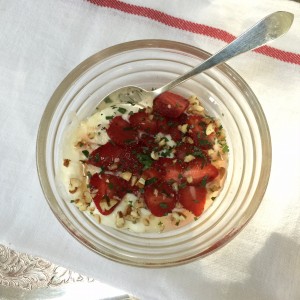
Fresh Quark Cheese topped with honey, strawberries, pecans, lemon verbena. Image copyright Susan Walter Sink.
To finish off the meal, and to the surprise of the girls, I had picked up Quark from Chapel Hill Creamery for class. Quark is used extensively in Spanish cuisine and I found several cakes and savory dishes that use this light and creamy cheese. My first intention was to make a Quark Cake, but time was slipping by quickly in class. The temperatures were warm that day and the girls were happy to try something seasonal and easy. We used many of the cake ingredients to make a healthy and current dessert. Spanish folks are famous for eating cheese, fruit and nut plates to finish a meal, so we decided to combine the idea of a cheese plate and cake to make Quark Sundaes with local honey, pecans, strawberries and fresh herbs.

